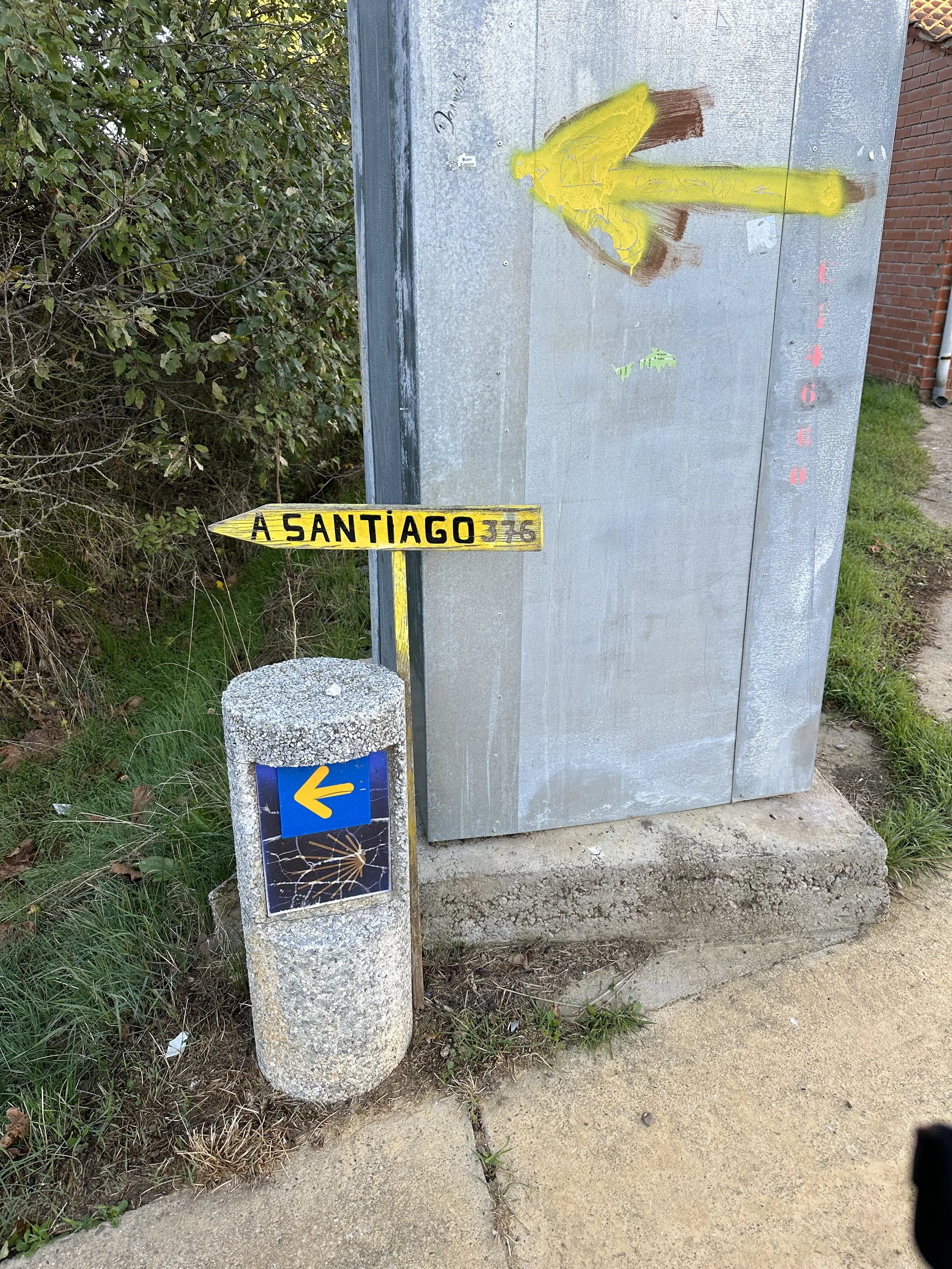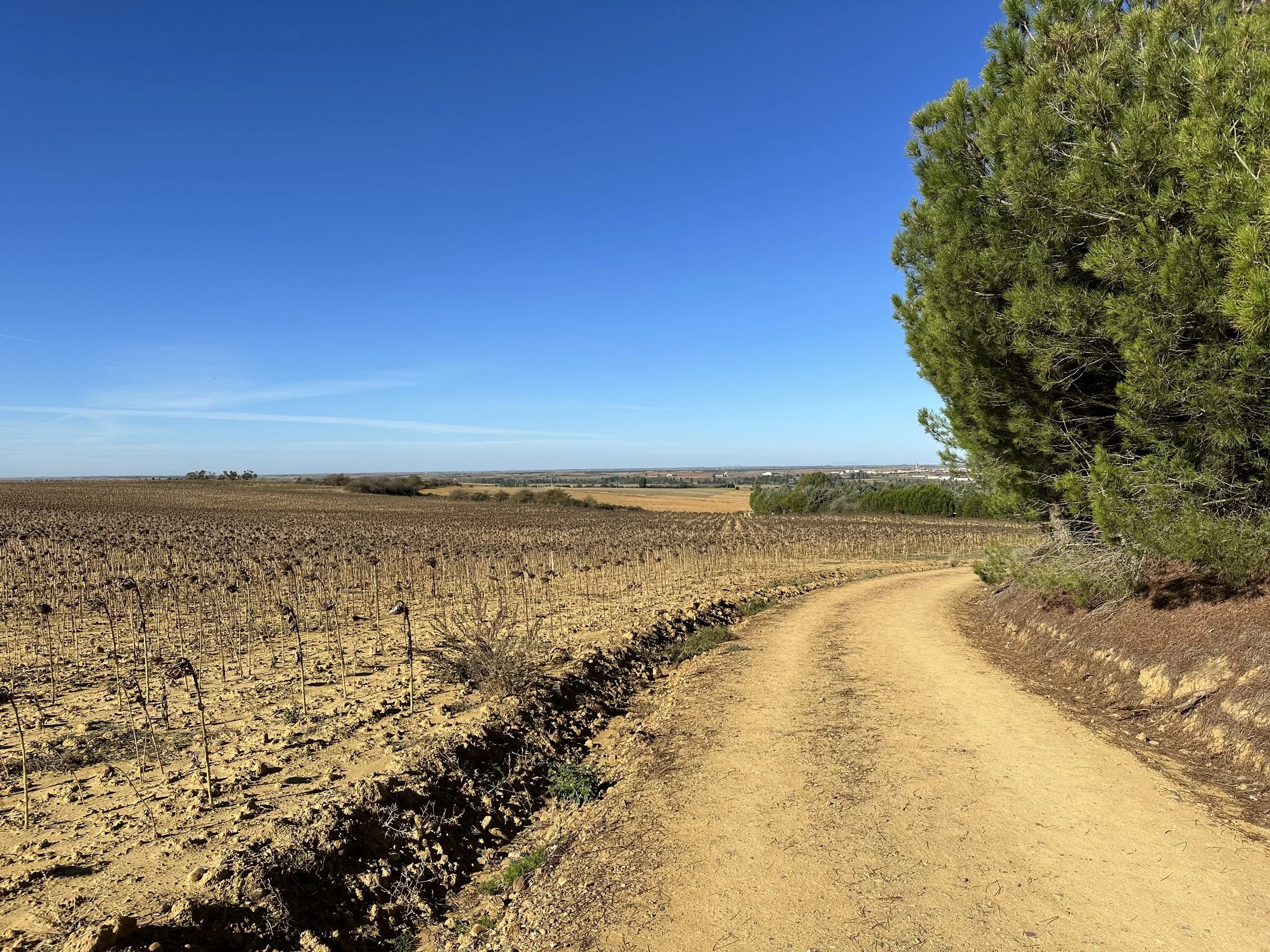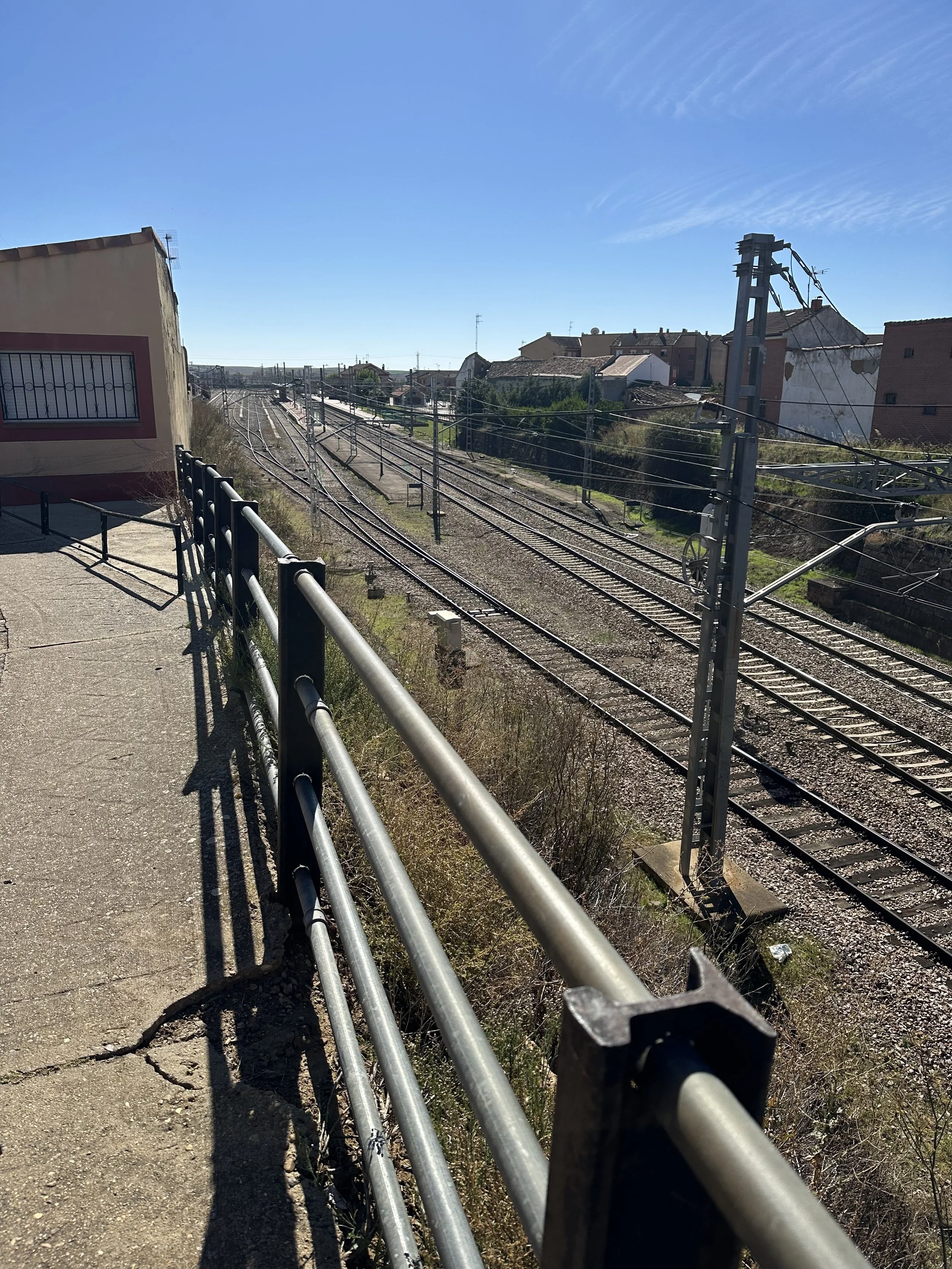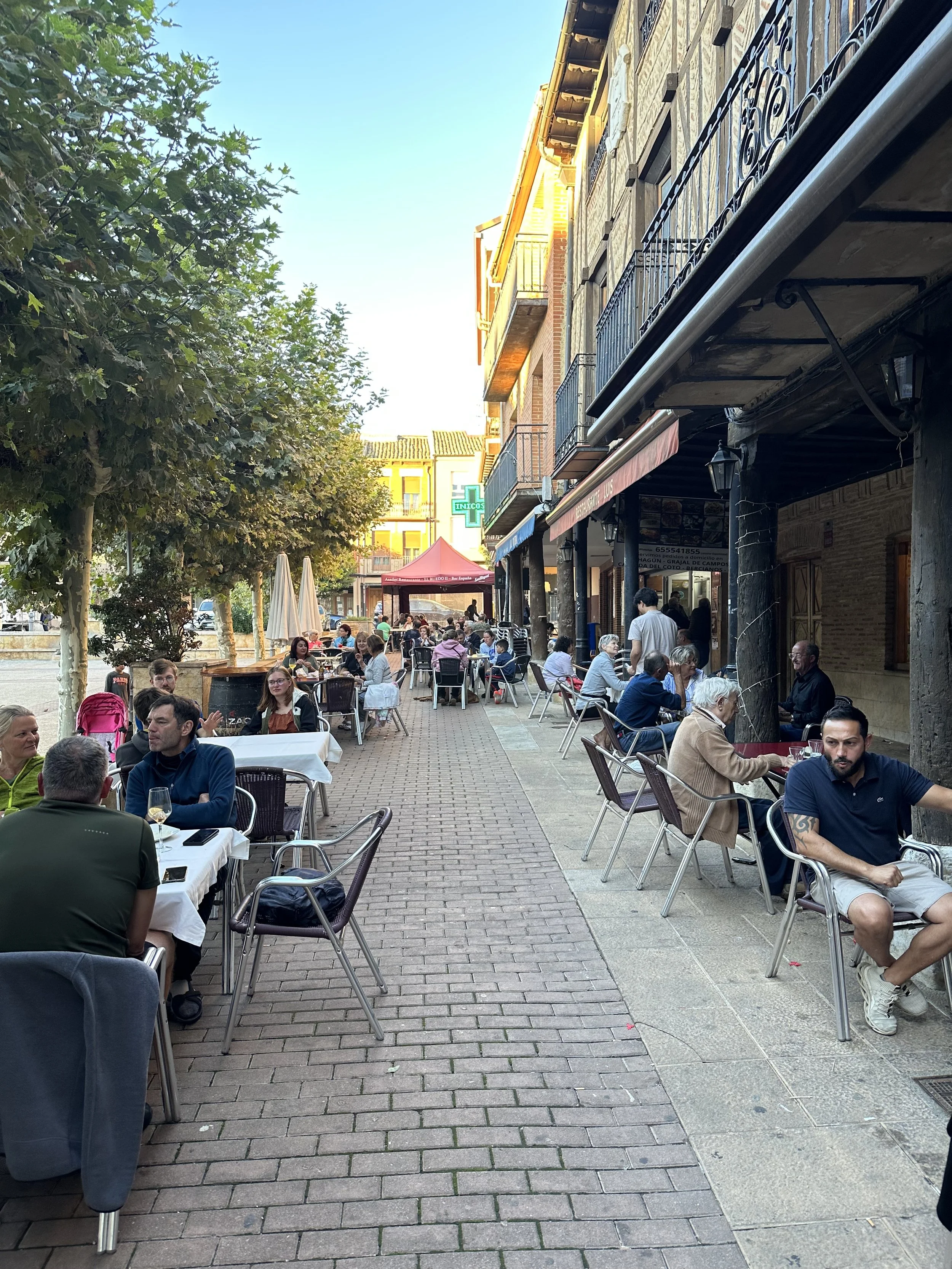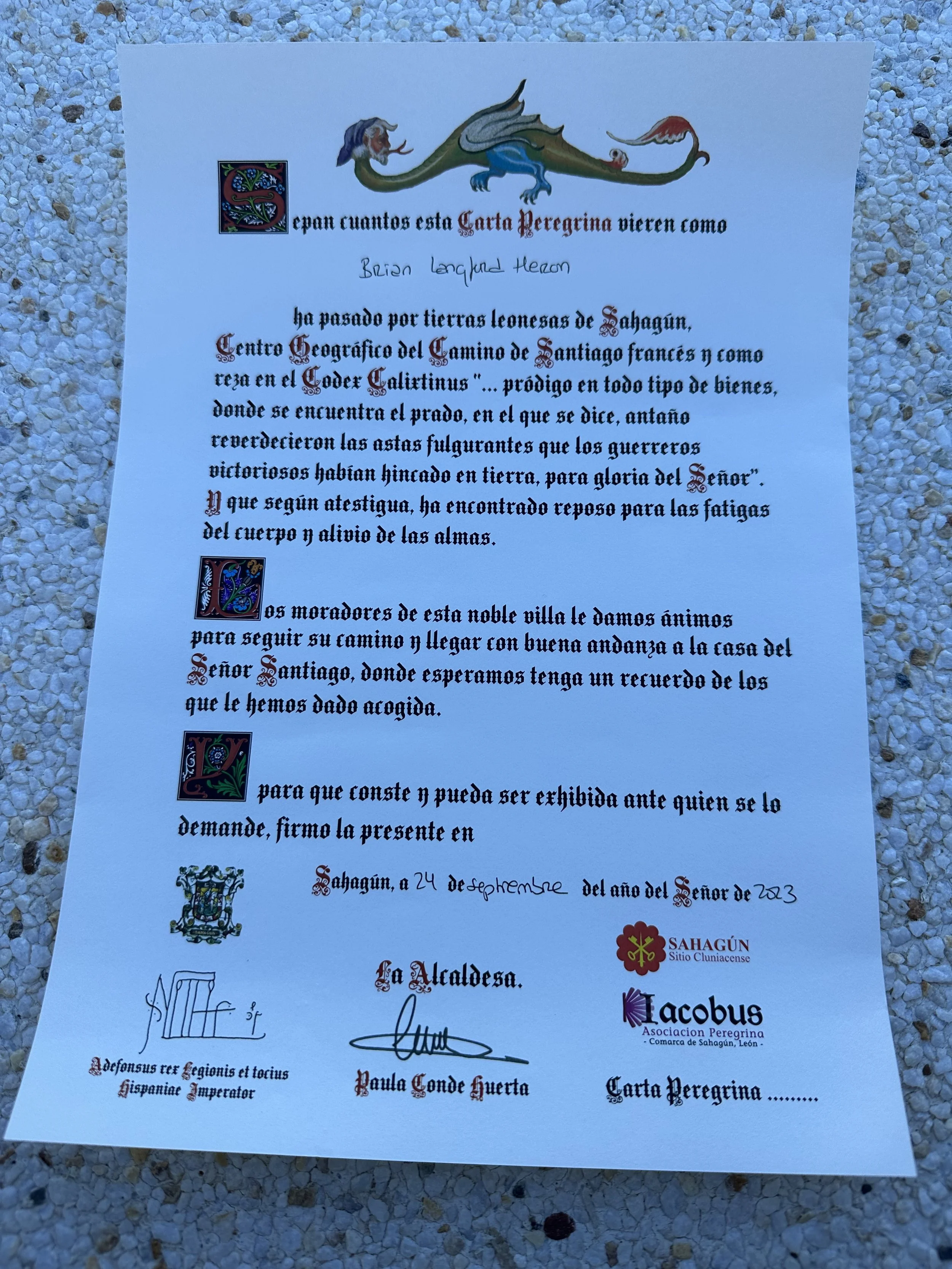Whispers from the Camino—Day 20
September 24. Terradillos de los Templarios to Sahagun. 13.4 km.
I woke up in Terradillos feeling and thinking, “I want to just kick this Camino in the butt!” I knew where the feeling came from. I spent three years in my early 20’s racing bicycles in the Colorado Rockies and have embarked on a handful of very physically ambitious adventures. Nine months before this Camino I had injured my leg playing pickleball. In fact, I had to postpone the Camino a full three months since my leg was not yet adequately healed for the rigors of a 500-mile walk.
I started the Camino intent on honoring the limits of my leg and my physical conditioning. I was actually proud of myself for following my own mantra, “Just do what your body and soul allows you to do each day.” I had learned that some days I could cover 30 km and other days I was content with about 12 km in order to give my leg a rest.
But as I entered the halfway point, I suddenly got antsy. I watched as younger men powered by me as if the Camino was something to be conquered rather than savored. My former personality kicked in. I wanted to get out the door and see if I could cover 30 or 40 kilometers a day. I wanted that “I kicked this thing in the butt” feeling that I often got when I had conquered a 12,000 foot pass or crossed a desert on my bike.
Entering Sahagun
It didn’t last long. As soon as I returned to the path my body immediately said, “Brian, listen to your body.” I did just that accepting that the pace I had been going (averaging about 22 km/day) was probably the pace I would continue to go. It meant that I would still be on the path for close to another three weeks. It made me feel like my life was on hold for a bit. I was suddenly antsy to just get on with my life and there was still another 375 kilometers to walk.
I actually think it was a good sign that I got antsy. I had been swirling quite a bit about where my life was going after the Camino and doing research on the British pilgrimage routes. I had settled quite a bit. Even though it wasn’t official, I was expecting to do a short interim stint in Eastern Oregon with a church discerning their legacy. It was only half time and just for six months. As I adjusted to that reality, the rest of my work seemed to reveal itself as well. I would use that time to finally work on my Rome to Rumi manuscript, continue to nurture the partnerships for a Trail of Tears “Remember the Removal” pilgrimage project and continue to develop my Pedal Pilgrim blog.
Dinner out on the plaza with other pilgrims
It seemed like I had settled on a direction which was part of why I wanted to do the Camino in the first place. Having that settled (at least in my mind) shifted my energy around the Camino. “Now I just want to get on with this.”
I reached the small town of Sahagun, a town that actually seemed quite a bit bigger than the 3,000 population advertised. Train tracks went through town and it appeared that it had been a much more significant hub for industry at one time.
Albergue de la Santa Cruz was reported to be a good experience. The Catholic Marist Order ran the albergue and only charged an eight Euro fee, the lowest of the whole pilgrimage so far. In addition, they had a Pilgrim Mass that all pilgrims were welcome and invited to. I found myself attending as many of those as I could. I am not sure why? But adding that religious element added another layer of depth to the experience. I knew the Camino has traditionally been a religious pilgrimage, but has attracted a much larger population of pilgrims who are doing it for other reasons such as personal growth, facing a change in one’s life, and for pure recreational adventure. Blending the personal and the religious felt just right for me.
The official “halfway” certificate.
I shared a late lunch with Roger, also a Protestant minister pondering the shift from organized religion to more experience-based spirituality. Together we hiked up to the Municipal Albergue Peregrinos Cluny to receive our half-way certificate. Meeting Roger felt significant. More than one of us was out here pondering the seismic shifts taking place in our religious cultures and congregations.

